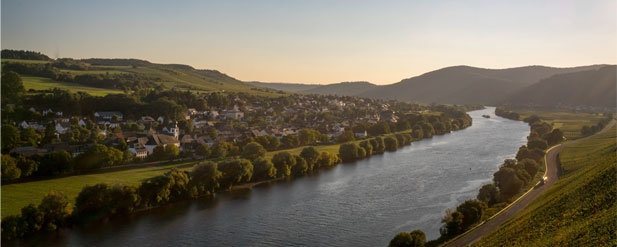
The vintage’s weather patterns can be summed up as follows: a mild winter followed by an early flowering. Warm, at times hot early season weather; July and early August hot and dry, worryingly so at times, then a cool veering on cold September with bountiful and welcome rain. Finally, a fine, very dry October with plenty of sunshine but cool days and cold nights, providing steady slow late season ripening and very little loss of acidity.
What is so interesting about the wines in the vintage is the combination of sunshine and freshness. The early blast of ripening has created wonderfully full fruit profiles, while the cool weather of September and October has allowed the grapes to retain analytically high acidity levels, providing an invisible framework of freshness for the finished wines. Never have I tasted such impressive wines that were at the same time, such a joy to taste young. Those that are familiar with the specific features of particular sites will find this vintage a delight, because while there is a charm to these 2015s, it never serves to obscure the tell-tale markers of a vineyard. Those coming new to Germany’s great grape will find plenty to love because the wines are simply delicious young. The ability to provide, as Oliver Haag put it, “something for everyone”, is a rare and special trait in a vintage.
We’ve made a selection this year based on the wines that we loved. Some younger vine plots, and those in the warmer sites, didn’t quite retain the focus and cool composure that we sought. We will not be offering them. The best sites however, have become magnified by this rare year. Interestingly, it is hard to select a level of wine that has fared best. There are some of the finest dry wines we’ve ever come across, with traditional dry hot-spots like Monzinger (Emrich-Schonleber) and Florsheim-Dalsheim (KP Keller) producing Grosses Gewachs on a magnificent scale, alongside less traditional trocken producing regions like the Mosel finding dry brilliance with a range from Thomas Haag at Schloss Lieser. In the Rheingau August Kesseler continues to exploit the steep slate vineyards of Lorch to produce some of the region’s most filigree dry Rieslings. Wonderful, dancing Kabinetts, Spatlese and Auslese have been produced in the Saar and Ruwer (Maximin Grunhaus and Zilliken), Mosel (across the board) all the way down to the Nahe and Rheinhessen. Many have produced wonderfully true Kabinetts of just 40 grams of sugar, with intense flavours alongside keen acidity levels and finishes that seem almost dry. There are Spatlese that float and Auslese that crackle with energy and focus, the product not of heavy botrytis but of healthy shrivelled grapes. Beyond Auslese, into Goldkap and Langhe Goldcap I found myself searching for new adjectives with which to elegantly sum up the sensations these wines produced. There’s a vividness, intensity, and weightlessness to them that is absolutely thrilling. Further up the Pradikat scale at Beerenauslese and Trockenbeerenauslese there are wines that simply need to be tasted to be believed. If you’re looking for a wine to lay down for generations to come, you need look no further. Seriously high acidity levels have been fused into the fruit and extract of these fine wines so imperceptibly that they leave no hard edges, no spike of acidity, just lift and life and luminescence. Down in the Rheinhessen KP Keller likens the vintage to the 1971s, a vintage the quality of which his father, Klaus senior, was convinced they would never see again. Here unusually the sweet wines vie with his great dry wines for the Keller crown in 2015. Elsewhere growers were at a loss to compare it to another vintage. “It’s absolutely unique, a weather pattern like that” Frank Schonleber told us.
Our full 2015 release, from GG to TBA will accompany our tasting on the 7th September. For more information on the tasting please look out for our invitation email.
61 St. James's Street, London SW1A 1LZ
Reg. Company No: 68576
AWRS URN: XPAW00000105319
Please do not share with anyone under the legal purchase age for alcohol.
Drink Responsibly www.drinkiq.com
© Justerini & Brooks 2025. All Rights Reserved.